Catastrophic workplace injuries can be complex for many reasons. This article provides case examples to illustrate why consulting a skilled personal injury lawyer after a workplace accident can be important. Don’t miss out on compensation if you or a loved one experiences a workplace accident.
1. When there are significant injuries, it is essential to receive proper compensation.
If you are injured at work, you can and should seek workers’ compensation. However, pursuing a personal injury or third-party claim is the best way to secure sufficient compensation if a claim can be found.
Consider the employees working at the Florida International University pedestrian bridge when it collapsed in 2018. One worker was killed, and two were injured while servicing a newly installed bridge. Five bridge construction companies were sued for negligence, four days after the collapse.
Skilled lawyers explore all possible avenues of recovery for those killed or seriously injured in such cases. Third-party claims offer several benefits over workers’ compensation cases. One of the advantages is that third-party claims can be heard by a jury. Additionally, third-party claims enable the claimant to seek damages for pain, suffering, and loss of consortium, which is not possible in workers’ compensation or disability claims. These types of claims do not include compensation for pain and suffering, and a jury will not hear them.
2. Borrowed Servant Doctrine: Has the Employee Consented to the Assignment?
Nowadays, it is becoming increasingly rare for individuals to remain with one employer throughout their career, as more and more people choose to work in the gig economy. Some companies use a staffing company, professional employer organization (PEO), or temp agency to reduce employee costs. When employers leave human resources, including workers’ compensation, to a PEO or temp agency, it may bring immediate cost savings but also drawbacks.
Case Example:
I once handled a case involving a temp agency employee who had suffered severe traumatic brain injury. Besides a workers’ compensation claim to the PEO, we sued both the company that hired the temp worker and the location where he was injured in a third-party claim. The temp employee traveled in the second employer’s vehicle to another location where a different worker at the third company used a forklift to load the second employer’s vehicle. The forklift knocked something on the client’s head, causing a catastrophic workplace injury. Both companies tried to invoke workers’ compensation immunity.
What does the law say?
The Florida legislature has provided that help supply services companies (also known as temp agencies) are protected under Fla. Stat. §440.11(2), and so are employers who utilize them. Temp workers are often considered borrowed servants. Whether a person is considered a borrowed agent is typically a jury question. The temp agent must consent to employment to be considered a borrowed servant. Sometimes, a temp agency and company hiring them do not give sufficient information and may hide key pertinent information.
Furthermore, when a temp agency is involved, and sends an employee to yet another location to do work, there is always a question about that third company. What do they tell the temp agency, employer, or possible borrowed servant about what is required? Such a case may allege the company that hired the temp worker failed to train him on dangers inherent to the third business location. After all, if the company hired him as an actual employee and gave him suitable training, this injury could have been prevented.
When a temporary worker is sent to work at multiple locations, each business may have separate contractual obligations. This means that the second employer of the temp worker may have agreed to take responsibility for their workers, even if they are temporary. Therefore, if there is any negligence on the part of the third business, it may be traced back to the second employer who originally hired the temp worker.
Our goal in all cases is to secure fair compensation for the injured. Sadly, we cannot resurrect, we cannot regrow limbs, and we cannot erase anguish from a person’s memory. All that is left is pursuing monetary security to compensate for the injury and loss of past and future income. We also hope that securing significant recovery from catastrophic workplace injuries reduces the chances of recurrent injury. By holding the negligent responsible, we strive to prevent history from repeating itself.
3. The More Non-Employers Involved, The More Avenues for Recovery.
To be clear, an employee covered by workers’ compensation will find it difficult to blame their employer: they are typically stuck only pursuing workers’ compensation benefits. Yet, an employee visiting a separate business location or injured by a visitor may ensure their lawyer investigates a claim against the business visited when injured or any other entity causing such an injury.
In the negligent forklift use case illustrated above, the visited business may have failed to train an employee or warn the visitor, and such a failure could have resulted in our client getting struck in the head, drastically changing his life.
Other cases where an employee sued a non-employer in addition to workers’ compensation or disability benefits may include:
- Pedestrian worker lost limb in car crash, sued person causing car crash;
- A police officer on patrol injures back, requiring surgery, and sued homeowner who left an uncovered hole on the property;
- Security guard on patrol injured leg requiring surgery, sued private business after tripping over wire dangerously strung across patrol path;
- Small business employee required serious surgeries, sued private homeowner who insisted on a course of action that led to a severe fall and injury;
- Small business employee requiring surgery, sued a large non-profit entity for not warning about an unpermitted building, with hidden danger, that caused fall injury;
- Delivery company employee requiring several surgeries, sued person causing serious car crash;
- A government employee on the job required surgery sued a private business for owning car and employing driver who caused car crash.
These are only a few examples, and there are countless others. Anytime a person is injured, and multiple entities are to blame, there are potential claims to explore. When seriously injured, you owe it to yourself to investigate, immediately, to determine if there is a claim. After all, even if a valid claim might exist, delay could eliminate any such claim because important evidence could be lost.
While most people pursue workers’ compensation first, you are not required to pursue a claim or treat under workers’ compensation to sue a third party that is to blame. If the person who caused the injury has suitable insurance coverage and you have health insurance, you can go to your own doctors and not use workers’ compensation doctors. One benefit of workers’ compensation is that there is no reason to argue who is at fault; no-fault benefits are aimed to get you back to work. One drawback is that while your employer’s insurance pays your doctors, they also get to pick them. If you have the right health insurance, you can pick your own doctors.
4. Workers Can Still Bring Product Liability Cases.
If a product harms a consumer due to a defect, the manufacturer is liable under product liability laws. For more information, read our blog “What are my options after a catastrophic work injury?”. You do not give up the right to bring a product liability case just because you get hurt on the job.
I have handled cases where an employee falls and suffers a catastrophic workplace injury because of safety equipment failure. When a crane malfunctions and causes harm to the operator or bystanders, or when faulty equipment results in electrocution, it can be considered a case. If an airbag fails or a poorly designed tire fails and catastrophic injury occurs, this claim can be pursued if you were working just the same as if you were on vacation.
In many cases, your employer may not even own the equipment you use; it is rented or provided by another company. There are possible claims against the company providing the equipment, and the manufacturer may be to blame. If equipment or a machine fails, this can result in a significant claim against the manufacturer, seller, or retailer, if that product caused a serious injury due to it being defective.
In such a case, your employer may gladly support your claim. After all, this defective product could have harmed other employees. Similarly, if a product’s manufacturer is to blame, workers’ compensation insurance would get help paying for your damages. Yes, we expect in a product case that the manufacturer will blame an employer or employee for misusing the product, but just because a defense is expected does not mean it will always prevail.
I recently handled a catastrophic workplace injury case where a young person, newly on the job, was assigned to use seriously dangerous industrial equipment. Tragically, this equipment destroyed the limb of this worker. An injury like this is the exact trauma where an injured person needs a lawyer to explore all options.
5. Intentional-Tort Exception: Virtually Certain to Cause Injury.
In limited circumstances, an employer can be held accountable for a catastrophic workplace injury to an employee under what is called an intentional tort, otherwise known as virtual certainty standard. The Florida Legislature passed this law in Fla. Stat. 440.11. This 2003 law provides that an employer can be sued if either:
1. The employer deliberately intended to injure the employee; or
2. The employer engaged in conduct that the employer knew, based on prior similar accidents or on explicit warnings specifically identifying a known danger, was virtually certain to result in injury or death to the employee, and the employee was not aware of the risk because the danger was not apparent and the employer deliberately concealed or misrepresented the danger so as to prevent the employee from exercising informed judgment about whether to perform the work.
This is a high standard. It is exceptionally difficult to pursue such claims. Juries have awarded substantial recovery but been reversed lately. There is not zero hope for suing an employer, but such claims are very difficult. That is, if the employer properly secured workers’ compensation coverage.
6. Employer Refuses to Secure Workers’ Compensation Insurance or Deny’s Coverage
An employer who failed to properly secure workers’ compensation coverage is not immune. That is part of the grand bargain: an employer who secured workers’ compensation insurance cannot be sued because they paid for those no-fault benefits that should automatically help the worker. Yet if an employer fails to pay for workers’ compensation insurance or fails to cover this specific worker, that employer can be sued like any other intelligent person or business.
True, a company that failed to secure insurance may be too small to pay for a severe injury. They are also poorly run, as it can be a crime not to have workers’ compensation insurance or to misrepresent having it. Few legitimate employers fail to pay for coverage. Sometimes, a company may forget to pay or fail to list an employee as covered. Then, you can find a substantial avenue for recovery. This is why, after a significant injury, you should pursue all possible avenues for recovery. If the employer cuts a corner or makes a mistake, you can protect your own interests.
7. Construction Companies Can Receive Special Protections: Horizontal and Vertical Immunity
Florida has passed limitations for construction companies. Florida law provides both “vertical” and “horizontal” immunity to employers and many related entities.
Vertical Immunity
Basically, all subcontractors under a general contractor is considered an employee of not only the direct employer but also the general contractor at the top above them. This is called “vertical immunity.” It protects the general contractor, also known as the “statutory employer.” Again, this only applies if the contractor makes sure the subcontractor or themselves covers this employee with workers’ compensation insurance.
The idea of vertical immunity is that the general contractor has a contractual obligation, which is passed down to another to perform. An exception to vertical immunity may exist if there is no entity for which a contract exists, for example, if the worker is building a speculative or “spec” home that is not under contract.
Horizontal Immunity
There is also “horizontal immunity” which protects one subcontractor from being sued by employees of another subcontractor. In such a joint enterprise, where all are properly insured, the only exception is if the subcontractor’s gross negligence caused the injury.
Gross negligence is also a very high standard. It is a willful, wanton, and reckless disregard of the consequences of one’s actions or omissions. It is a lower standard than virtually certain, but still very hard to prove.
Exceptions to immunity exist. For instance, if a vendor or delivery person is injured on the job due to the construction company’s negligence, they can still file a claim. On the other hand, non-construction companies like janitorial services have been known to claim that an employee of another company was providing contracted services, and thus should be considered an employee of the contracting party. Such a defense might prevail in some cases.
8. Conclusion: No Harm in Seeking a Lawyer to Investigate
Intentional or criminally negligent conduct might be deterred by criminal laws, but laws governing workplace safety do secure recovery for the injured. For example, when the United States Occupational Safety and Health Administration (OSHA) issues a fine, the fines are rarely substantial. The fines also never directly aid any specific injured party.
Any person with a loved one suffering a catastrophic workplace injury should help them explore all their options, immediately. Employers have many avenues to reduce dramatically or even totally avoid liability; only fear of a potential lawsuit will be an incentive to ensure workplace safety. After all, when businesses all operate on the principle of profit, how else can negligent actions be deterred?
Not only should you reach out as soon as possible, but make sure that your lawyer is familiar with the intersections of personal injury, workers’ compensation, and disability law, to ensure that you pursue all avenues of recovery for your case.
Authored by Aaron Clemens, Esq.

The post Catastrophic workplace injury cases resulting in successful third-party claims appeared first on Romano Law Group.




